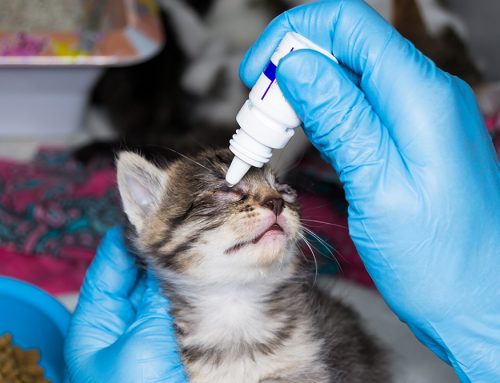Overview:
Acute Moist Dermatitis, commonly known as “hot spots,” is a skin condition that affects both dogs and cats, though it is more frequently seen in dogs. This condition is characterized by red, inflamed, and often painful areas of skin that can appear suddenly and spread rapidly. Hot spots are typically caused by a bacterial infection secondary to skin irritation.
Causes:
Hot spots can develop from a variety of underlying causes, including:
- Allergies: Flea allergies, food allergies, or environmental allergens can lead to excessive licking and scratching.
- Parasites: Fleas, ticks, or mites can irritate the skin and trigger a hot spot.
- Poor Grooming: Matted fur or inadequate grooming can trap moisture, leading to skin irritation.
- Infections: Bacterial or fungal infections can exacerbate the skin condition.
- Skin Trauma: Scratches, insect bites, or other minor skin injuries can lead to hot spots if the area becomes infected.
Symptoms:
Hot spots are usually easy to identify by the following symptoms:
- Red, inflamed skin: The affected area is often warm to the touch and can be extremely sensitive.
- Moist, oozing sores: The skin may exude a clear fluid or pus.
- Hair loss: The fur around the affected area may fall out or be pulled out by the pet’s excessive licking or scratching.
- Itching and discomfort: Pets with hot spots often lick, chew, or scratch the affected area incessantly, which can worsen the condition.
Diagnosis:
At Mission Veterinary Clinic, our veterinarians will perform a thorough examination of your pet to diagnose a hot spot. This may include:
- Physical Examination: Checking the skin for signs of hot spots and assessing the extent of the infection.
- Skin Scraping or Cytology: To rule out parasites or other skin conditions.
- Allergy Testing: If an allergic reaction is suspected as the underlying cause.
Treatment:
Treating hot spots involves addressing both the immediate infection and the underlying cause. Treatment options include:
- Clipping the Fur: Trimming the hair around the affected area to prevent further irritation and allow the skin to breathe.
- Cleansing the Skin: Using antiseptic solutions to clean the hot spot and reduce bacterial load.
- Topical Medications: Applying antibiotic or corticosteroid creams to reduce inflammation and treat the infection.
- Oral Medications: In more severe cases, oral antibiotics or anti-inflammatory drugs may be prescribed.
- Preventative Care: Managing underlying conditions such as allergies or ensuring proper grooming to prevent future occurrences.
Prevention:
Preventing hot spots involves regular grooming, parasite control, and monitoring for any signs of skin irritation. If your pet is prone to hot spots, consider the following preventative measures:
- Regular Grooming: Keep your pet’s coat clean and well-groomed to avoid matting and moisture retention.
- Flea and Tick Control: Use appropriate flea and tick prevention to minimize the risk of skin irritation.
- Allergy Management: Work with your veterinarian to identify and manage any potential allergens.
When to Seek Veterinary Care:
If you notice any signs of a hot spot on your pet, it’s essential to seek veterinary care promptly. Early treatment can prevent the condition from worsening and alleviate your pet’s discomfort.
Contact Us:
If you have concerns about your pet’s skin health or suspect they may have a hot spot, please visit Mission Veterinary Clinic. Our experienced team is here to provide comprehensive care and help your pet feel their best.
Mission Veterinary Clinic
16915 San Fernando Mission Blvd, Granada Hills, CA 91344
Phone: 818-363-8143
Website: missionvet.com
Email: missionveterinaryclinic@gmail.com










Leave A Comment